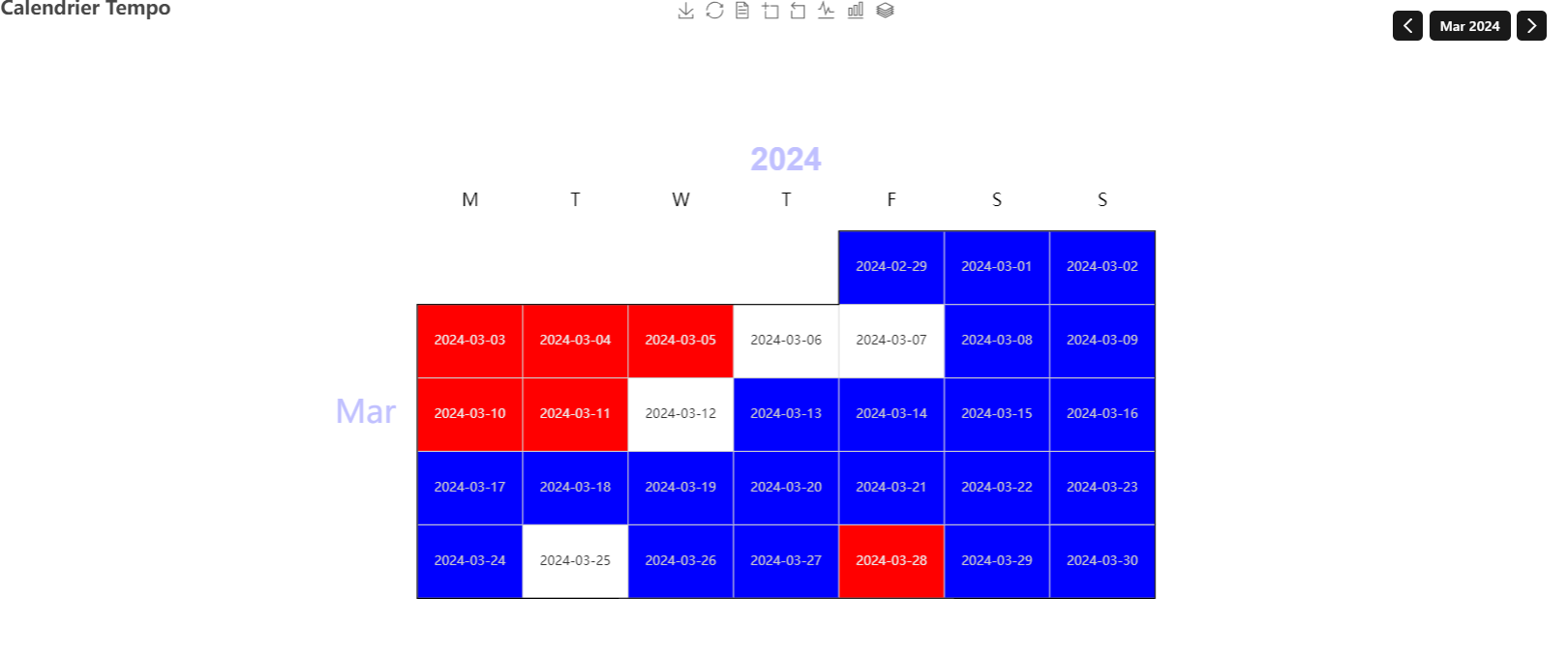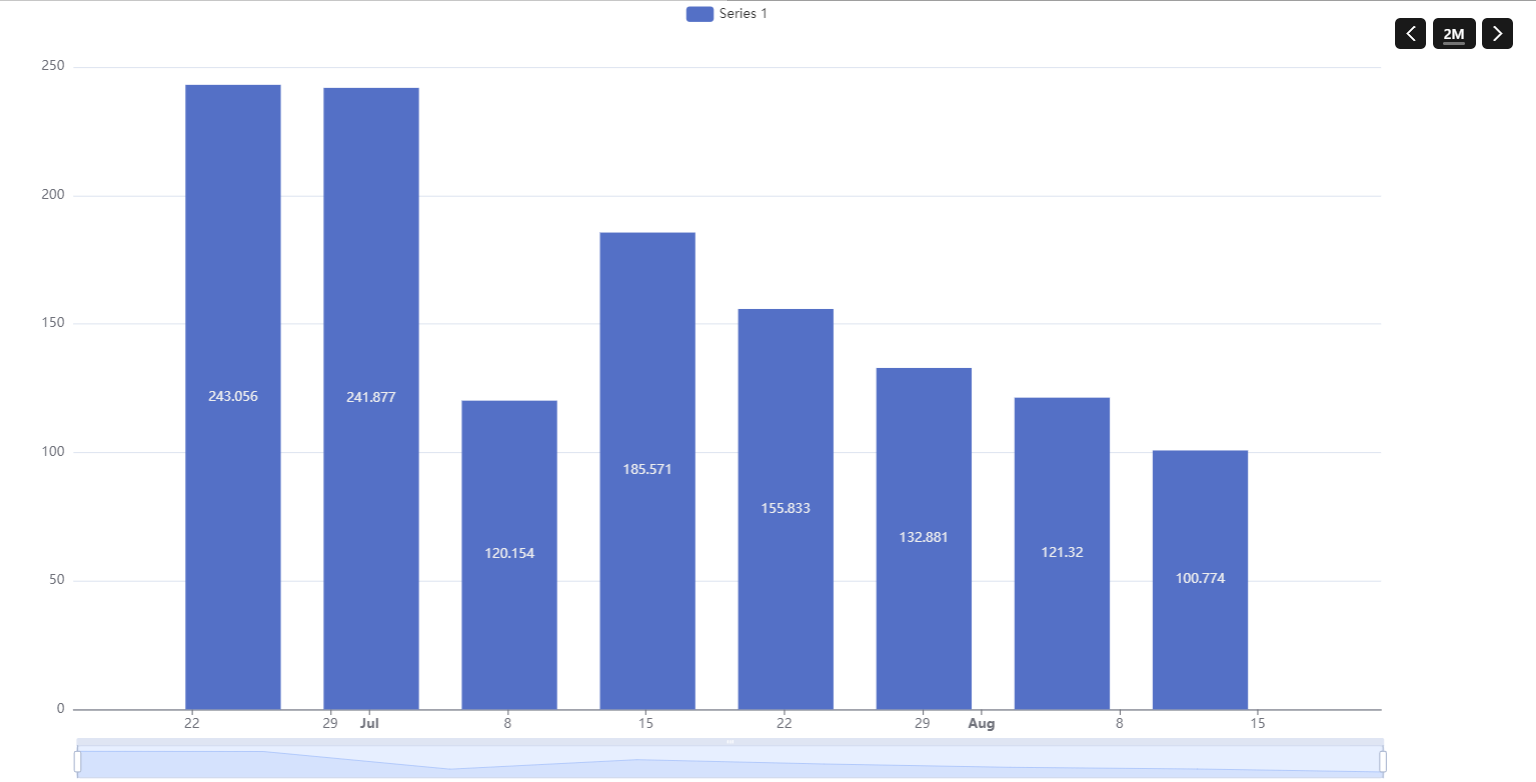|
|
||
|---|---|---|
| .. | ||
| doc | ||
| src/main | ||
| NOTICE | ||
| pom.xml | ||
| README.md | ||
Linky Binding
This binding uses the API provided by Enedis to retrieve your energy consumption data. You need to create an Enedis account here if you don't have one already.
Please ensure that you have accepted their conditions, and check that you can see graphs on the website. Especially, check hourly view/graph. Enedis may ask for permission the first time to start collecting hourly data.
The binding will not provide these informations unless this step is ok.
This new binding version is able to use multiple bridge to access the consumption data. You can use :
- The EnedisWebBridge : this one will use the old Enedis API, base on the enedis web site to gather the data.
- The MyElectricalDataBridge : this one will use the new Rest Enedis API. We will use the MyElectricalData proxy site to access the data.
- The EnedisBridge : this one will also use the new Rest Enedis API, and will directly gather data from Enedis Site.
There is advantage and disadvantage for each method.
- EnedisWebBridge is the old way to go.
Supported Things
There is one supported thing : the linky thing is retrieving the consumption of your home from the Linky electric meter.
You can have multiple linky thing in your setup if you have different house / linky linked to your account.
Discovery
This binding does not provide discovery service.
Binding Configuration
To retrieve data, Linky thing will be need to be linked to a LinkyBridge. LinkyBridge can be today select between EnedisWebBridge, MyElectricalDataBridge and EnedisBridge.
If you select EnedisWebBridge, you will need :
- To create an Enedis account : https://mon-compte-client.enedis.fr/
- To fill the bridge with you information : username, Password, and also InternalAuthId.
| Parameter | Description |
|---|---|
| username | Your Enedis platform username. |
| password | Your Enedis platform password. |
| internalAuthId | The internal authID |
This version is now compatible with the new version of Enedis WEB API (deployed from june 2020). To avoid the captcha login, it is necessary to log before on a classical browser (e.g Chrome, Firefox) and to retrieve the user cookies (internalAuthId).
Instructions given for Firefox :
- Go to https://mon-compte-client.enedis.fr/.
- Select "Particulier" in the drop down list and click on the "Connexion" button.
- You'll be redirected to a page where you'll have to enter you Enedis account email address and check the "Je ne suis pas un robot" checkbox.
- Clic on "Suivant".
- In the login page, prefilled with your mail address, enter your Enedis account password and click on "Connexion à Espace Client Enedis".
- You will be directed to your Enedis account environment. Get back to previous page in you browser.
- Disconnect from your Enedis account
- Repeat steps 1, 2. You should arrive directly on step 5, then open the developer tool window (F12) and select "Stockage" tab. In the "Cookies" entry, select "https://mon-compte-enedis.fr". You'll find an entry named "internalAuthId", copy this value in your openHAB configuration.
If you select MyElectricalDataBridge, you will need :
- To create an Enedis account : https://mon-compte-client.enedis.fr/
- To do a consent request on the MyElectricalData site : https://www.myelectricaldata.fr/
- To fill the token provided by MyElectricalData into your Linky things config.
These steps can also be done using the connectlinky page available from your openhab: http://localhost:8080/connectlinky. You're wil have:
- to select your PrmId from the combobox.
- to click the "Authorized Bridge".
- to follow the authorized process on the enedis page : please select only one prmId there as the token is specific to each Linky.
- then go back to the /connectlinky page, and click on the "Retrieve token" link to fill the Linky things with the token.
Thing Configuration
The thing has the following configuration parameters:
| Parameter | Description |
|---|---|
| PrmId | The PrmId link to the linky Handler. |
| token | Optional : need if a token necessary to access this Linky thing (use for MyElectricaldata) |
Channels
The information that is retrieved is available as many different groups.
- The Main group will give information about the contract linked to this linky.
You will find the following channel:
| Channel ID | Item Type | Description |
|---|---|---|
| main#identitiy | String | The full name of the contract older |
| main#contractSubscribedPower | String | The subscribed max Power |
| main#contractLastActivationDate | String | |
| main#contractDistributionTariff | String | |
| main#contractOffpeakHours | String | The OffPeakHour link to your contract |
| main#contractLastDistributionTariffChangeDate | String | |
| main#contractSegment | String | |
| main#usagePointId | String | |
| main#usagePointStatus | String | |
| main#usagePointMeterType | String | |
| main#usagePointAddressCity | String | |
| main#usagePointAddressCountry | String | |
| main#usagePointAddressInseeCode | String | |
| main#usagePointAddressPostalCode | String | |
| main#usagePointAddressStreet | String | |
| main#contactMail | String | |
| main#contactPhone | String |
- The tempo group will give information about the tempo day color link to a tempo contract
| Channel ID | Item Type | Description |
|---|---|---|
| tempo#tempoInfoToday | String | The tempo color for the current day |
| tempo#tempoInfoTomorrow | String | The tempo color for the tomorrow |
| tempo#tempoInfoTimeSeries | String | A timeseries channel that will expose full tempo information for one year |
Using the timeseries channel, you will be able to esealy create a calendar graph to show the tempo calendar. You will need for this to enable a timeseries persistence framework. Graph definitions will look like this
config:
chartType: month
future: false
label: Tempo
period: M
sidebar: true
slots:
calendar:
- component: oh-calendar-axis
config:
cellSize: 10
dayLabel:
firstDay: 1
fontSize: 16
margin: 20
left: center
monthLabel:
color: "#c0c0ff"
fontSize: 30
margin: 20
orient: vertical
top: middle
yearLabel:
color: "#c0c0ff"
fontSize: 30
margin: 50
dataZoom:
- component: oh-chart-datazoom
config:
orient: horizontal
show: true
type: slider
grid: []
legend:
- component: oh-chart-legend
config:
show: false
series:
- component: oh-calendar-series
config:
aggregationFunction: average
calendarIndex: 0
coordinateSystem: calendar
item: Linky_Melody_Tempo
label:
formatter: =v=> JSON.stringify(v.data[0]).substring(1,11)
show: true
smartFormatter: false
name: Series 1
service: inmemory
type: heatmap
title:
- component: oh-chart-title
config:
show: true
text: Calendrier Tempo
toolbox:
- component: oh-chart-toolbox
config:
presetFeatures:
- saveAsImage
- restore
- dataView
- dataZoom
- magicType
show: true
tooltip:
- component: oh-chart-tooltip
config:
formatter: "{c}"
show: true
visualMap:
- component: oh-chart-visualmap
config:
bottom: 0
calculable: true
inRange:
color:
- "#0000ff"
- "#ffffff"
- "#ff0000"
left: center
max: 2
min: 0
orient: horizontal
presetPalette: ""
show: false
type: continuous
xAxis: []
yAxis: []
The resulting graph will look like this:
| Channel ID | Item Type | Description |
|---|---|---|
| daily#yesterday | Number:Energy | Yesterday energy usage |
| daily#day-2 | Number:Energy | Day-2 energy usage |
| daily#day-3 | Number:Energy | Day-3 energy usage |
| daily#consumption | Number:Energy | timeseries for consumption |
| daily#power | Number:Power | Yesterday's peak power usage |
| daily#timestamp | DateTime | Timestamp of the power peak |
| daily#power-2 | Number:Power | Day-2's peak power usage |
| daily#timestamp-2 | DateTime | Timestamp Day-2's of the power peak |
| daily#power-3 | Number:Power | Day-3's peak power usage |
| daily#timestamp-3 | DateTime | Timestamp Day-3's of the power peak |
| daily#mawPower | Number:Power | timeseries for maxPower |
| Channel ID | Item Type | Description |
|---|---|---|
| weekly#thisWeek | Number:Energy | Current week energy usage |
| weekly#lastWeek | Number:Energy | Last week energy usage |
| weekly#week-2 | Number:Energy | Last week energy usage |
| weekly#consumption | Number:Energy | Last week energy usage |
| weekly#maxPower | Number:Energy | Last week energy usage |
| Channel ID | Item Type | Description |
|---|---|---|
| monthly#thisMonth | Number:Energy | Current month energy usage |
| monthly#lastMonth | Number:Energy | Last month energy usage |
| monthly#month-2 | Number:Energy | Last month energy usage |
| monthly#consumption | Number:Energy | Last month energy usage |
| monthly#maxPower | Number:Energy | Last month energy usage |
| Channel ID | Item Type | Description |
|---|---|---|
| yearly#thisYear | Number:Energy | Current year energy usage |
| yearly#lastYear | Number:Energy | Last year energy usage |
| yearly#year-2 | Number:Energy | year-2 energy usage |
| yearly#consumption | Number:Energy | Last year energy usage |
| yearly#maxPower | Number:Energy | Last year energy usage |
Console Commands
The binding provides one specific command you can use in the console.
Enter the command openhab:linky to get the usage.
openhab:linky <thingUID> report <start day> <end day> [<separator>] - report daily consumptions between two dates
The command report reports in the console the daily consumptions between two dates.
If no dates are provided, the last 7 are considered by default.
Start and end day are formatted yyyy-mm-dd.
Here is an example of command you can run: openhab:linky linky:linky:local report 2020-11-15 2020-12-15.
Docker specificities
In case you are running openHAB inside Docker, the binding will work only if you set the environment variable CRYPTO_POLICY to the value "unlimited" as documented here.
Full Example
Thing
Thing linky:linky:local "Compteur Linky" [ username="example@domaine.fr", password="******", internalAuthId="******" ]
Items
Number:Energy ConsoHier "Conso hier [%.0f %unit%]" <energy> { channel="linky:linky:local:daily#yesterday" }
Number:Energy ConsoSemaineEnCours "Conso cette semaine [%.0f %unit%]" <energy> { channel="linky:linky:local:weekly#thisWeek" }
Number:Energy ConsoSemaineDerniere "Conso semaine dernière [%.0f %unit%]" <energy> { channel="linky:linky:local:weekly#lastWeek" }
Number:Energy ConsoMoisEnCours "Conso ce mois [%.0f %unit%]" <energy> { channel="linky:linky:local:monthly#thisMonth" }
Number:Energy ConsoMoisDernier "Conso mois dernier [%.0f %unit%]" <energy> { channel="linky:linky:local:monthly#lastMonth" }
Number:Energy ConsoAnneeEnCours "Conso cette année [%.0f %unit%]" <energy> { channel="linky:linky:local:yearly#thisYear" }
Number:Energy ConsoAnneeDerniere "Conso année dernière [%.0f %unit%]" <energy> { channel="linky:linky:local:yearly#lastYear" }

